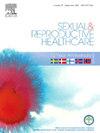The regulation and practice of midwifery prescribing around the world: A scoping review of regulations and literature
IF 1.7
3区 医学
Q3 PUBLIC, ENVIRONMENTAL & OCCUPATIONAL HEALTH
引用次数: 0
Abstract
Background
The authority to prescribe medications has been extended to midwives in many countries. Understanding how midwifery prescribing is used, whether it is effective, and how it is regulated can inform the development of midwifery prescribing.
Aim
To describe regulatory standards for midwifery prescribing in high-income English-speaking countries and identify insights from research regarding midwife prescribing.
Methods
A scoping review using the Joanna Briggs Institute methodology. Literature searches targeted 1. Grey literature relating to professional standards, regulations, and / or legislation regarding midwifery prescribing in selected high-income countries; 2. Peer-reviewed empirical research regarding midwifery prescribing.
Findings
In some jurisdictions, educational preparation for midwifery prescribing is completed in the primary midwifery degree, with all midwives having prescribing authority; in others, a separate course provides the entry point for a subset of the midwifery workforce. Models of midwifery prescribing have moved to more autonomous prescribing over time.
Midwives used their prescribing authority in diverse ways. No research directly examined safety and effectiveness. However, approaches expected to produce safe and effective prescribing were demonstrated. Access to care was improved when independent midwifery prescribing was available.
Discussion
Midwifery prescribing is well embedded around the world but has not been as comprehensively evaluated as other forms of non-medical prescribing. Non-medical prescribing by other health professionals has expanded over time, with evidence of better outcomes compared to medical prescribing. Barriers to midwifery prescribing reflect those impacting other non-medical prescribers.
Conclusion
Addressing barriers to midwifery prescribing offers an effective means to enhance maternity care provision.
世界各地助产处方的法规和实践:法规和文献的范围审查
在许多国家,开处方的权力已经扩展到助产士。了解助产处方是如何使用的,它是否有效,以及它是如何监管的,可以为助产处方的发展提供信息。目的描述高收入英语国家助产处方的监管标准,并从有关助产处方的研究中获得见解。方法采用乔安娜布里格斯研究所的方法进行范围审查。文献搜索目标1。与选定高收入国家助产处方的专业标准、法规和/或立法相关的灰色文献;2. 关于助产处方的同行评议实证研究。在一些司法管辖区,助产士开处方的教育准备是在初级助产士学位完成的,所有助产士都有开处方的权力;在其他地方,一个单独的课程为助产人员的一个子集提供了入门点。随着时间的推移,助产处方模式已经转向更自主的处方。助产士以多种方式使用他们的处方权威。没有研究直接检验其安全性和有效性。然而,期望产生安全和有效的处方的方法被证明。当有独立的助产处方时,获得护理的机会得到了改善。助产处方在世界各地都很普遍,但还没有像其他形式的非医疗处方那样得到全面的评估。随着时间的推移,其他卫生专业人员的非医疗处方也在扩大,有证据表明,与医疗处方相比,非医疗处方的效果更好。助产士开处方的障碍反映了影响其他非医疗处方者的障碍。结论解决助产处方障碍是提高孕产妇保健服务水平的有效手段。
本文章由计算机程序翻译,如有差异,请以英文原文为准。
求助全文
约1分钟内获得全文
求助全文
来源期刊

Sexual & Reproductive Healthcare
PUBLIC, ENVIRONMENTAL & OCCUPATIONAL HEALTH-
CiteScore
2.70
自引率
5.60%
发文量
73
审稿时长
45 days
 求助内容:
求助内容: 应助结果提醒方式:
应助结果提醒方式:


